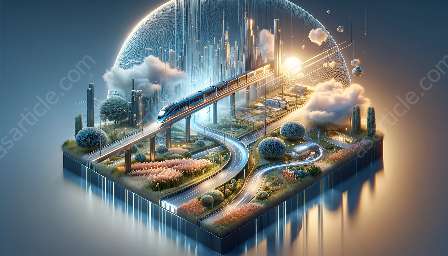Traffic simulation and modeling is a multifaceted and complex discipline that lies at the intersection of transportation sciences and applied sciences. It involves the use of computational tools, mathematical models, and empirical data to understand, predict, and optimize the behavior of traffic systems. By simulating various traffic scenarios and modeling the interactions between vehicles, infrastructure, and human behavior, researchers and practitioners can gain valuable insights into traffic dynamics and develop innovative solutions for improving transportation efficiency, safety, and sustainability.
The Importance of Traffic Simulation and Modeling
As urbanization and population growth continue to increase the demands on transportation infrastructure, the need for effective traffic management and planning has never been more critical. Traffic simulation and modeling provide a powerful means to analyze and assess the performance of existing infrastructure and to design and evaluate new transportation systems. By simulating the flow of vehicles, pedestrians, and other modes of transportation, researchers can study the impact of various factors such as traffic volume, road geometry, signal timing, and driver behavior on overall system performance.
Furthermore, traffic simulation and modeling play a key role in addressing transportation challenges related to congestion, air pollution, energy consumption, and road safety. By developing accurate models and conducting simulations, scientists and engineers can explore innovative solutions that optimize traffic flow, reduce emissions, and enhance the overall sustainability of transportation systems.
Tools and Techniques in Traffic Simulation and Modeling
The field of traffic simulation and modeling encompasses a diverse set of tools and techniques that draw from various disciplines, including computer science, transportation engineering, and data analytics. One of the fundamental approaches involves the use of microscopic and macroscopic simulation models to represent the behavior of individual vehicles and the collective traffic flow, respectively. These models can capture complex interactions, such as lane-changing behavior, traffic signal operations, and the propagation of congestion.
Moreover, the advancement in technology has led to the emergence of sophisticated simulation platforms and traffic modeling software that offer advanced visualization capabilities, real-time data integration, and scenario analysis. These tools enable researchers to simulate realistic traffic environments, validate their models against empirical data, and assess the impact of new transportation interventions and policies.
Interdisciplinary Nature of Traffic Simulation and Modeling
Traffic simulation and modeling inherently embody an interdisciplinary character, drawing from fields such as computer science, mathematics, transportation planning, and behavioral psychology. For instance, the use of machine learning and artificial intelligence techniques has enabled researchers to develop predictive models that can anticipate traffic patterns and dynamically optimize traffic signal operations. Additionally, behavioral studies and human factors research are crucial in understanding driver decision-making and incorporating human behavior into simulation models.
Furthermore, the integration of geographical information systems (GIS), remote sensing, and big data analytics has enriched the capabilities of traffic simulation and modeling by providing access to vast amounts of spatial and temporal data. This multidisciplinary approach facilitates a holistic understanding of transportation systems, allowing for more realistic and effective modeling of traffic dynamics.
Applications of Traffic Simulation and Modeling
The applications of traffic simulation and modeling extend across a wide range of domains, including urban planning, intelligent transportation systems, and transportation policy development. In urban planning, simulation models are used to assess the impact of land use changes, new infrastructure developments, and transit-oriented designs on traffic flow and accessibility.
Furthermore, in the context of intelligent transportation systems (ITS), simulation and modeling are essential for designing and evaluating advanced traffic management strategies, such as adaptive signal control, dynamic route guidance, and connected vehicle technologies. These technologies aim to improve the efficiency and safety of transportation networks by leveraging real-time data and communication between vehicles and infrastructure.
Additionally, traffic simulation and modeling are instrumental in informing transportation policy decisions, including the design of road pricing schemes, the implementation of sustainable transport measures, and the assessment of environmental impacts. By simulating different policy scenarios and evaluating their implications on traffic flow, emissions, and travel behavior, policymakers can make more informed and evidence-based decisions.
Challenges and Future Directions
Despite the advancements in traffic simulation and modeling, several challenges and opportunities lie ahead. The increasing complexity of traffic systems, the emergence of new mobility modes, and the integration of smart city technologies pose new challenges for researchers and practitioners in the field. Addressing these challenges requires a continued focus on developing more accurate and scalable simulation models, leveraging real-time data sources, and integrating emerging technologies such as connected and autonomous vehicles into simulation frameworks.
Moreover, the field of traffic simulation and modeling is poised to benefit from the growing emphasis on sustainability and resilience in transportation planning. Future research directions may include the exploration of innovative mobility solutions, the integration of renewable energy sources, and the optimization of multi-modal transportation networks.
Overall, traffic simulation and modeling offer a rich and dynamic area of interdisciplinary research and practical application, with the potential to address the complex and evolving challenges of modern transportation systems. By harnessing the power of computational tools, data analytics, and interdisciplinary collaboration, researchers can drive innovations that shape the future of transportation and urban mobility.

